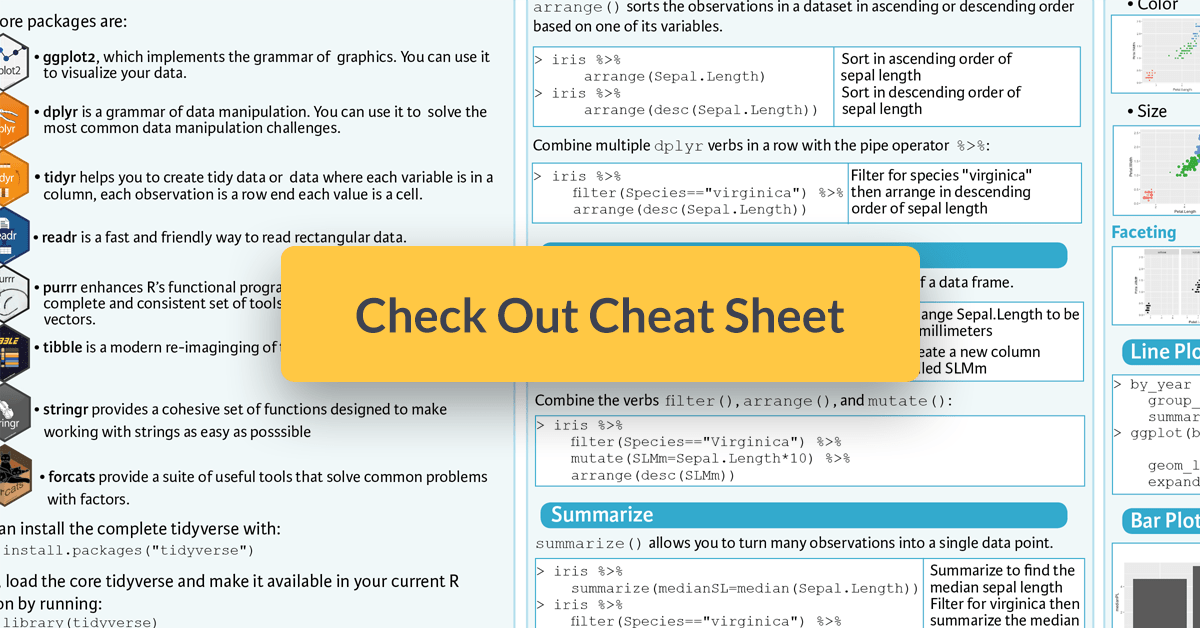Modelr is stable: it has achieved its goal of making it easier to teach modelling within the tidyverse. For more general modelling tasks, check out the family of “tidymodel” packages like recipes, rsample, parsnip, and tidyposterior. If you’re using R to do data analysis inside a company, most of the data you need probably already lives in a database (it’s just a matter of figuring out which one!). However, you will learn how to load data in to a local database in order to demonstrate dplyr’s database tools. Dbplyr is a part of the tidyverse. The main janitor functions can: perfectly format data.frame column names; provide quick counts of variable combinations (i.e., frequency tables and crosstabs); and isolate duplicate records. Other janitor functions nicely format the tabulation results. These tabulate-and-report functions approximate popular features of SPSS and Microsoft Excel. R recognizes 600 time zones. Each encodes the time zone, Daylight Savings Time, and historical calendar variations for an area. R assigns one time zone per vector. Use the UTC time zone to avoid Daylight Savings. OlsonNames Returns a list of valid time zone names. OlsonNames withtz(time, tzone = ') Get the same date-time in a new. Rstudio::conf 2019. Line in for mac download. Using R, the Tidyverse, H2O, and Shiny to reduce employee attrition. January 25, 2019. An organization that loses 200 high-performing employees per year has a lost productivity cost of about $15M/year.
Tidyverse Cheat Sheets R
Usage
readr is part of the core tidyverse, so load it with:

To accurately read a rectangular dataset with readr you combine two pieces: a function that parses the overall file, and a column specification. The column specification describes how each column should be converted from a character vector to the most appropriate data type, and in most cases it’s not necessary because readr will guess it for you automatically.
R Tidyverse Cheat Sheet Pdf
readr supports seven file formats with seven read_ functions:
read_csv(): comma separated (CSV) filesread_tsv(): tab separated filesread_delim(): general delimited filesread_fwf(): fixed width filesread_table(): tabular files where columns are separated by white-space.read_log(): web log files
In many cases, these functions will just work: you supply the path to a file and you get a tibble back. Mac for linux developers. The following example loads a sample file bundled with readr:
Tidyverse Cheat Sheet Review
Note that readr prints the column specification. This is useful because it allows you to check that the columns have been read in as you expect, and if they haven’t, you can easily copy and paste into a new call:
Tibble Cheat Sheet
vignette('readr') gives more detail on how readr guesses the column types, how you can override the defaults, and provides some useful tools for debugging parsing problems.

